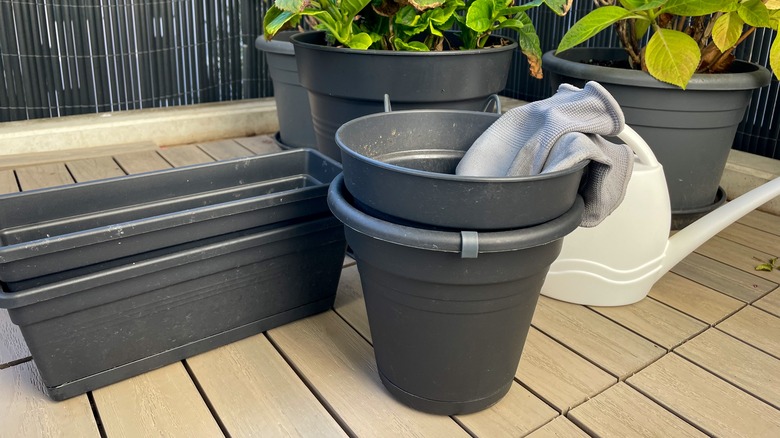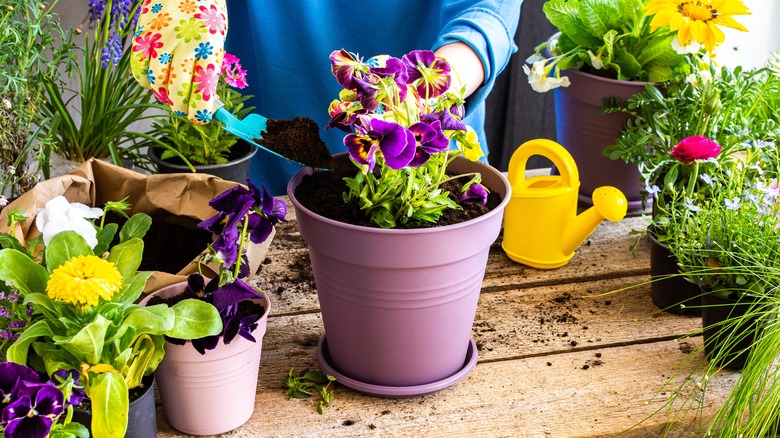The Gardening Mistake You Don't Want To Make At The End Of Growing Season
As the growing season comes to an end, it's a great time to reflect on the journey you've shared with your plants. You've nurtured them to their full potential, from tiny seeds to bountiful harvests. However, it's important not to overlook the simple mistake of not cleaning your flower pots. This blunder can have a more significant impact than you might realize on the future success of your garden.
As a dedicated gardener, you put in a lot of hard work and time to nurture your plants. Though it may seem like a small detail, cleaning your containers is a vital step that you really shouldn't overlook. It may not be the most exciting task, but it's worth the effort to prevent harmful bacteria, fungi, and insects from taking hold. Keeping your pots clean will ensure that your garden stays healthy and vibrant. The good news is it's easy to do, and you don't need any special tools or cleaners.
Cleaning and sanitizing outdoor plant containers
To ensure healthy plants next season, clean and sanitize your outdoor plant pots according to their material. No matter what type of pot you have, start by wiping off any loose dirt with a soft cloth, brush, or sponge. Then, for terracotta pots, soak them in equal parts water and white vinegar for up to an hour to kill lingering bacteria. Rinse off and allow to air dry. Plastic pots are easy to clean with warm soapy water, followed by a 10 minute soak in a container with one part household bleach to nine parts water.
After wiping off ceramic or glazed pots, you can sanitize them by cleaning them with a cloth dampened with rubbing alcohol. Metal pots are nonporous, meaning they are less likely to carry diseases. A thorough scrub with warm, soapy water should do the trick. You can also wash wooden planters, but reapply oil or wood preservatives once they are completely dry to protect them.
Other tips and precautions to consider
When cleaning and sanitizing your outdoor planters, it's important to keep a few tips and precautions in mind. For example, wear gloves to protect your hands when using cleaning agents like bleach or vinegar. Don't forget to clean and sanitize your pots' drainage holes. You can use a thin brush or cotton swab soaked in the cleaning solution to reach these tiny crevices and make sure they're free of any debris or harmful organisms.
While you're cleaning, take the time to inspect your containers for cracks or damage. You can try some fixes to save your broken and chipped pots, or repurpose them for other uses such as fairy garden fixtures or "spilled" flower containers. After cleaning and sanitizing your pots, consider storing them upside down or covering them to prevent dust, debris, and water from settling inside during the off-season. Proper storage will make your pots ready for planting when the next growing season arrives.

